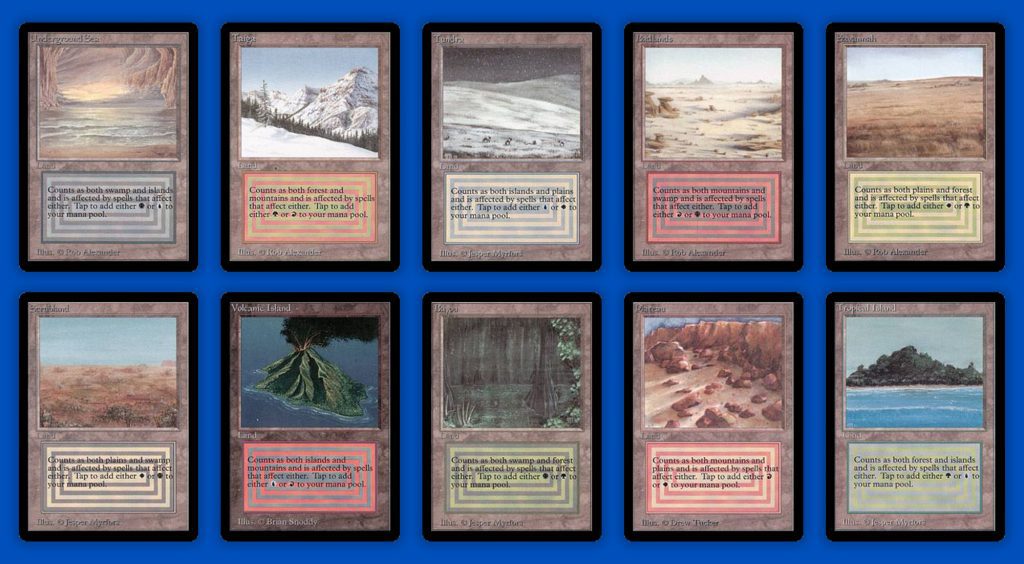The Original Dual Lands of Magic the Gathering | History & Analysis
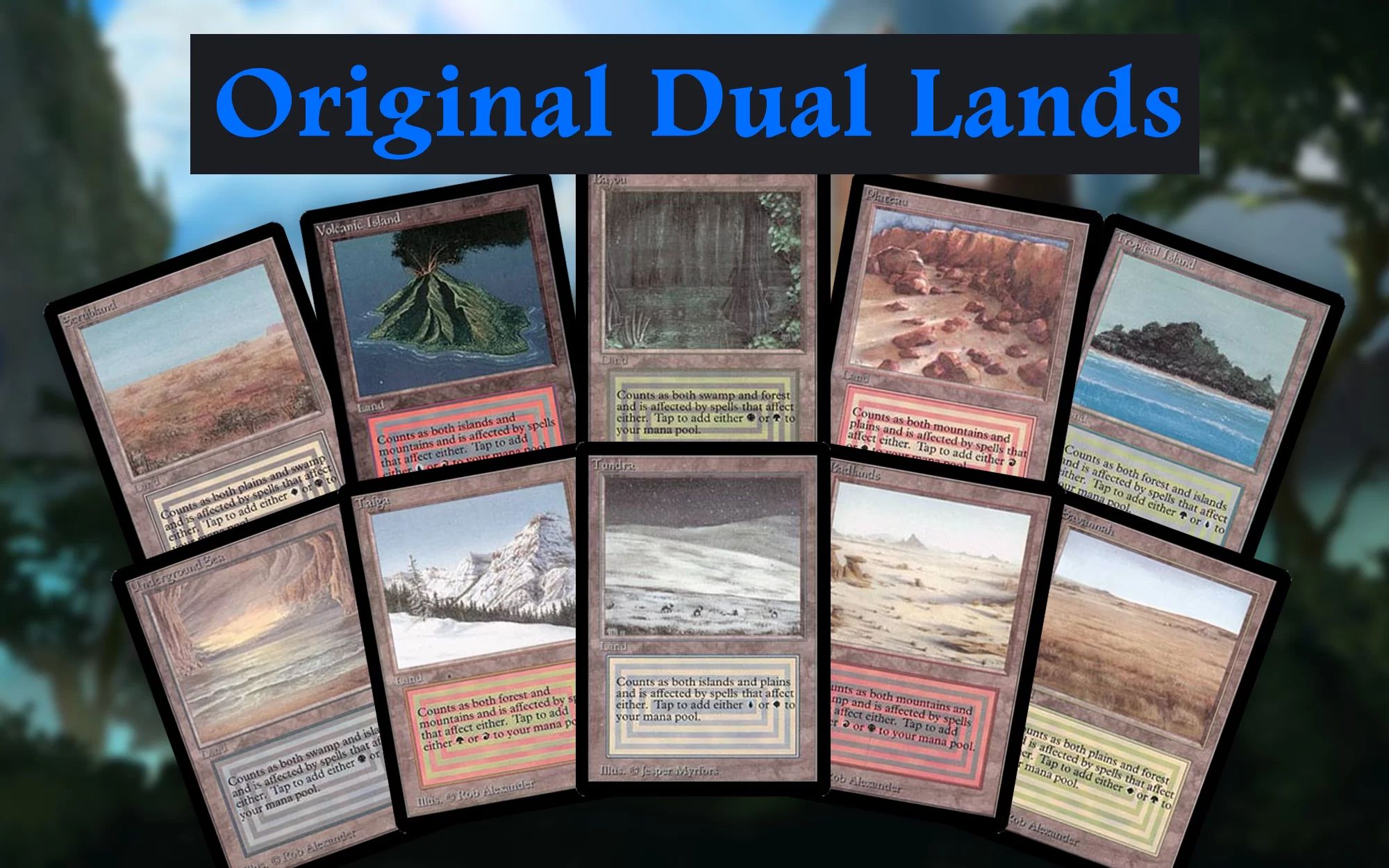
What Are Dual Lands?
A Dual Land (or a Dual for short) is a land in Magic the Gathering that can produce two types of mana. Dual lands were initially printed in Limited Edition Alpha. There are loads of different dual lands that have been released throughout Magic’s history, but today we are going to focus on the original duals that were printed in Alpha, Beta, Unlimited, and Revised.
The OG duals are arguably the strongest lands in the game. They are simple cards – they don’t come into the battlefield tapped, they don’t shock you like shock lands, and they don’t retrieve other lands like fetch lands. They simply tap for your choice of two basic land types. For example, Bayou has a color pair of green and black and can be tapped as if it were a forest or a swamp. Bayou’s card type is also both a forest and a swamp.
Keep in mind that you can’t tap a dual for both types of mana at once. It produces your choice of mana each time you tap it.
What are the Original Dual Lands?
Allied Colored
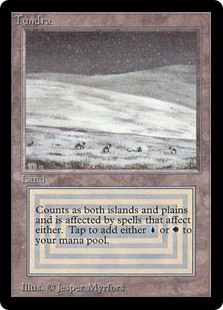
Tundra (White/Blue)
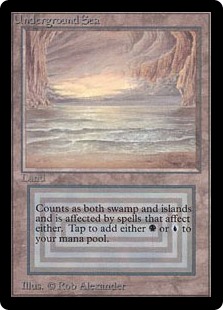
Underground Sea (Blue/Black)
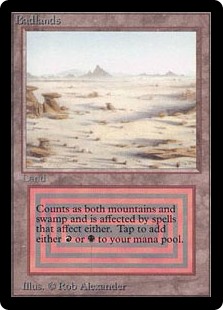
Badlands (Black/Red)
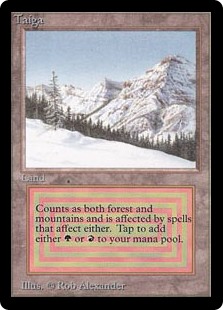
Taiga (Red/Green)
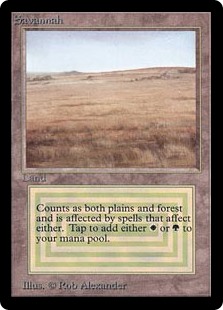
Savannah (Green/White)
Enemy Colored
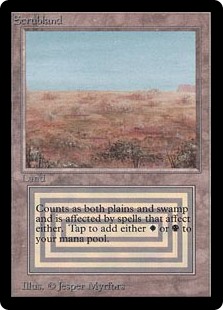
Scrubland (White/Black)
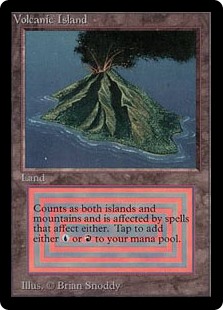
Volcanic Island (Blue/Red)
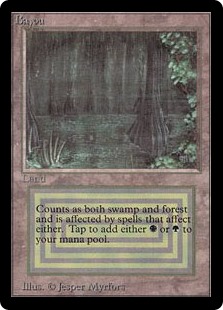
Bayou (Black/Green)
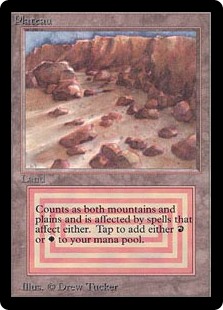
Plateau (Red/White)
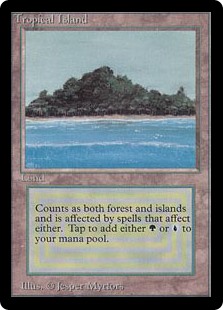
Tropical Island (Green/Blue)
What is so Great About the Original Dual Lands?
The foundation of any good multi-colored deck is its land base. There have been countless takes on lands that produce two colors of mana throughout the years. Unfortunately, most dual and tri lands have some drawbacks as a tradeoff for the power they provide. For example, Shock Lands (another great set of mana cards) hit you for two damage if you bring them in untapped.
Dual Lands have the same positive effect that Shock Lands afford, but without the downside.
In competitive play, a reliable mana base is the most important thing. It allows a player to be super consistent with spell casting and reduces the volatility and random chance in the game.
The Alpha and Beta dual lands are still the best way to fix your mana. They come into play with no conditions and can be found by any search effect that targets non-basics like Islands, Forests, or Swamps.
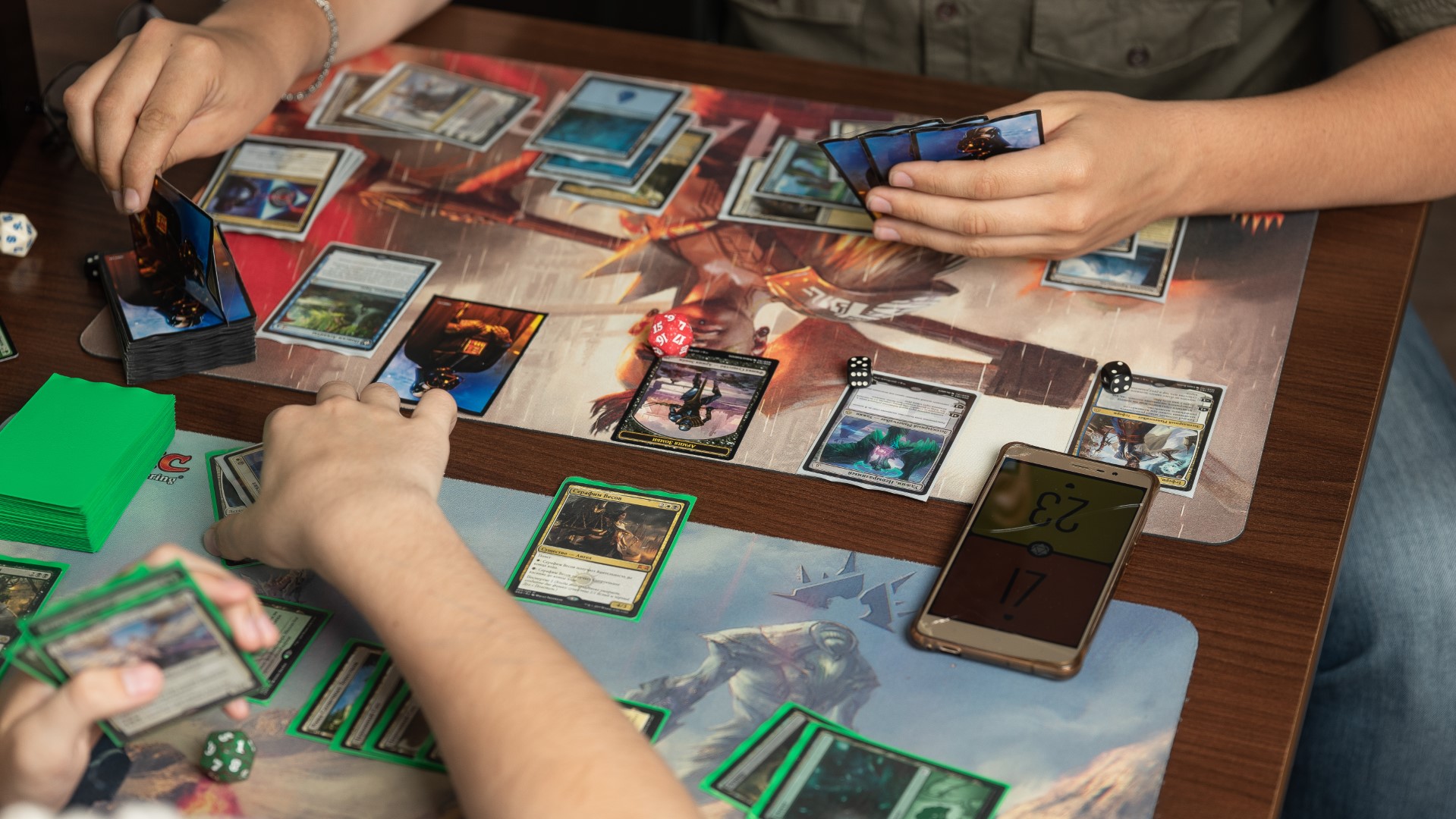
Why are OG Dual Lands so Highly Sought After?
Rarity
The original duals are on the reserved list. This means that Wizards of the Coast has stated they won’t be reprinted. The print runs of the earliest sets of cards are much lower than modern sets, and dual lands were printed in a rare slot. This means that they are very scarce, so the supply is low.
When you combine the relatively low supply with the high demand, you can see why they cost so much.
Power Level
Although dual land cards may not have the same power levels as the absolute best cards in Magic the Gathering, they are extremely powerful. OG dual lands will improve the power of virtually any multi-colored mana deck.
Color Fixing
Color fixing is critical to all eternal formats. Color fixing means that you manipulate your mana base in such a way as to have access to the colors of mana that you need when you need it. OG duals remain the pinnacle of mana fixing simply because they are versatile and have no drawbacks.
Getting the mana you need means you can cast spells reliably, and you’ll win more games. Colored mana fixing is a big deal in all formats.
Increase in Multi-colored Decks
Single-colored decks don’t have to worry about mana fixing and the like. Back in the day, single-colored decks were often the most common deck types you’d see. However, formats such as commander have made multi-colored decks much more popular in recent years.
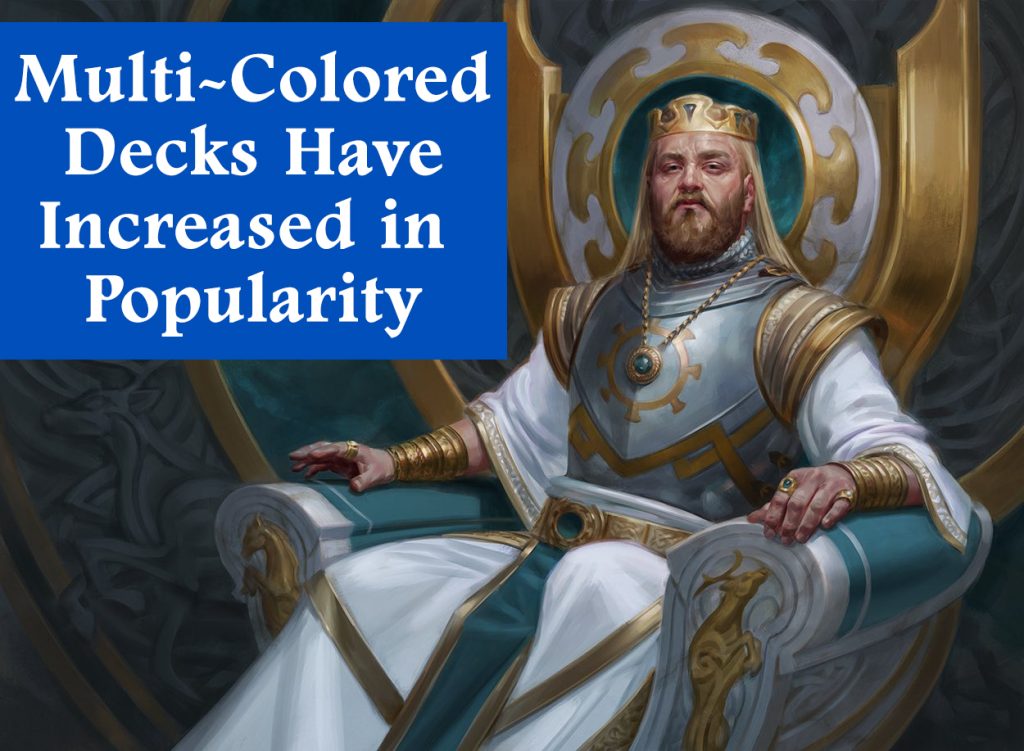
Duals are an essential part of every format where they’re legal. Most versions cost at least hundreds of dollars. Alpha Dual lands will cost thousands. An Alpha Underground Sea can go for over $10k.
Despite the exorbitant price, they are versatile and game-changing when appropriately used.
How do the Original Duals Compare to Other Dual Lands?
Pain Lands
Pain lands can produce two types of mana, but you must take one damage unless you tap it for colorless. On the other hand, original duals can tap for either mana type freely.
What’s more, the card type of something like Underground River is just “Land.” This means that you can’t target it using fetch lands types. This is a big drawback.
Check Lands
Check lands don’t cause you damage a la shock and pain lands, but they have another requirement. You must already control a land with one of the two land types that they tap for. This means that early in the game when mana fixing is most critical, you could get stuck bringing in a check land tapped.
Fast Lands
Fast lands are pretty restrictive. They only come into play untapped if you have two or fewer other lands on the battlefield. This works in certain deck types but is otherwise not remarkable.
Bond Lands
Bond lands have their unique drawback. They only come in untapped if you have two or more opponents. This means they are suitable for multi-player formats like commander. But otherwise not very useful.
Shock Lands
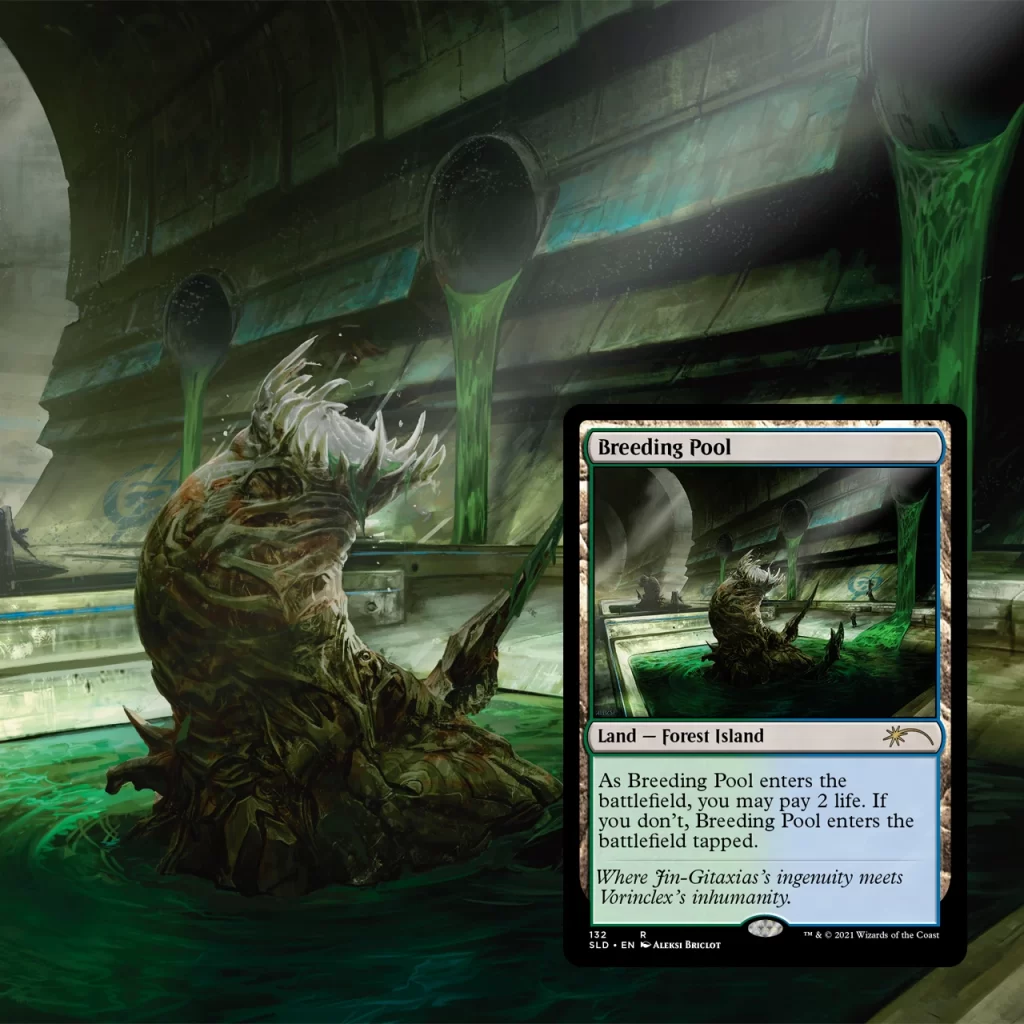
Shock lands require you to pay two life to bring them onto the battlefield untapped. This isn’t a huge price to pay in many cases, but it makes Shocks objectively worse than OG dual land cards. We wrote an article where you can learn more about Shock Lands.
Fetch Lands
Fetches are only dual lands in a very technical sense. That is that they have two mana card types. They don’t produce mana in and of themselves. Instead, they allow you to retrieve other lands you might need, including dual lands.
Fetch lands have another added benefit; they thin out the lands from your deck, making it less likely to draw one later in the game.
How Do They Stack Up?
It’s pretty clear that original duals not only smash basic lands in terms of utility but are better than other dual lands in almost any scenario. Moreover, they are excellent lands in nearly every situation.
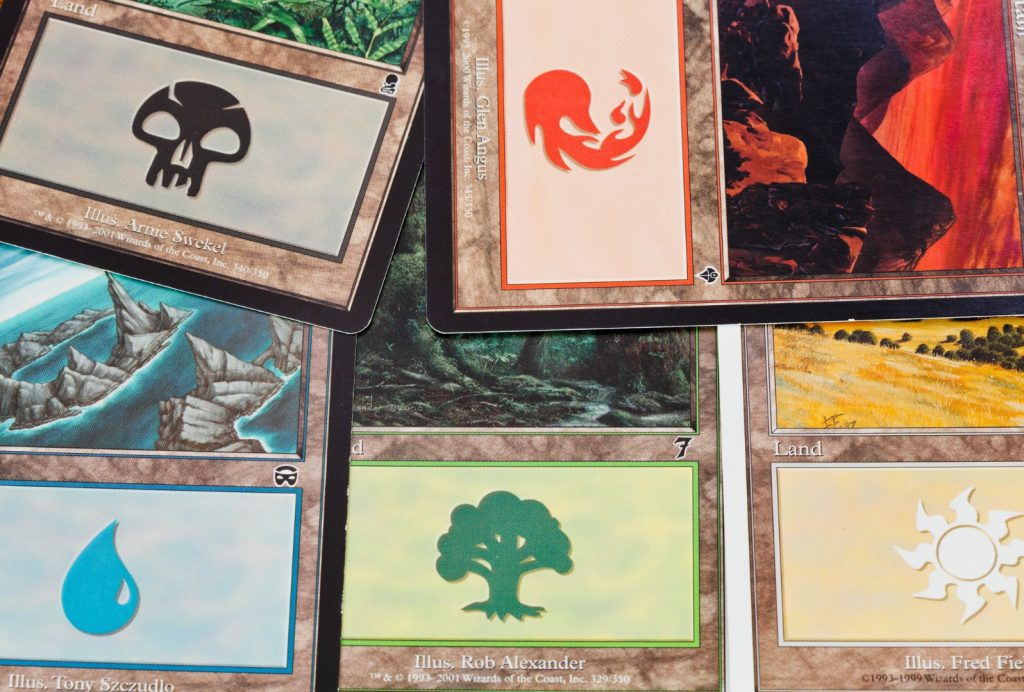
Pricing
We’ve already covered the fact that dual lands are scarce and also highly sought after. As you can imagine, this has caused them to steadily rise in prices to the point that they are inaccessible to most players.
The cheapest of the original dual lands is Taiga. A Revised copy will cost you roughly $300 if it’s in good condition. For an Alpha print, however, you can expect to pay a minimum of $2,000 for a Taiga.
The most expensive of the bunch is Underground Sea. For a revised version, you can expect to pay around $600 for a copy. An Alpha Underground Sea, on the other hand, will run you upwards of $10k.
Graded versions in mint condition can go for twice that or more.
You can expect the prices and value to continue to rise as long as MTG remains popular.
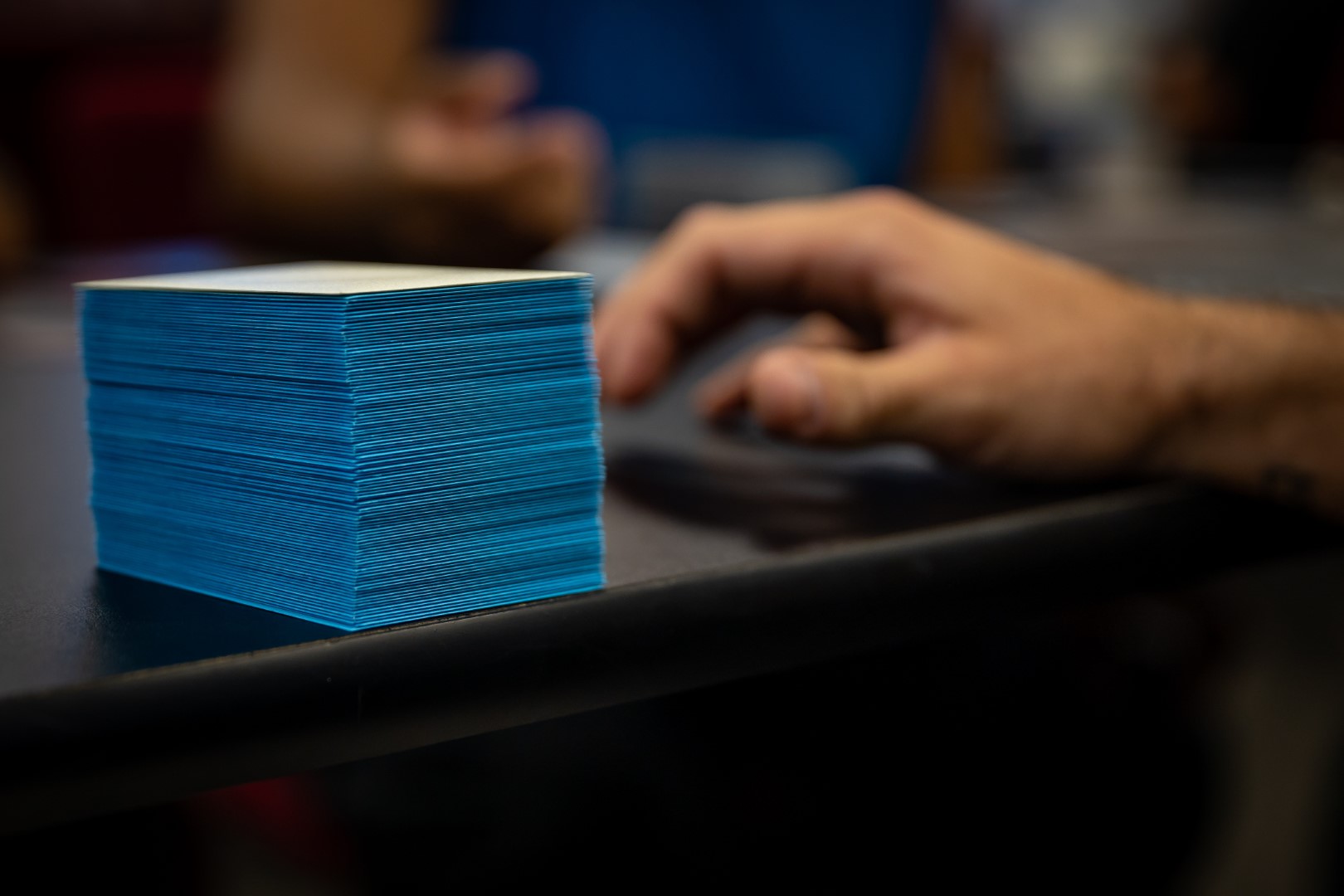
How to Get Your Hands on Dual Lands?
Just because dual land cards are expensive doesn’t mean you’re locked out of using them. Magic the Gathering is a game we think should be accessible for all players, new and old.
We recommend getting a set of Dual Land proxy cards. Our custom proxies will cost you a few bucks each and look the same as standard Magic cards. It’s a much cheaper alternative that lets most players boost their play quickly.
Ron
Share this Post
Recent Posts
- MTG’s Olivia, Opulent Outlaw Sees Massive Price Spike Amid Assassin’s Creed Release
- Wizards Has Announced a New Charity Secret Lair for the Late Sheldon Menery
- What size are Magic: the Gathering Cards?
- Does Snoop Dogg Play Magic: the Gathering?
- Wizards of the Coast Offers Up to $145k for Creative Text Designer for MTG Cards
Product Categories
ProxyMtG@protonmail.com

